Discover expert-approved strategies to manage pregnancy-induced foot changes, including edema, arch pain, and more. Elevate your comfort during this special time with our comprehensive guide.
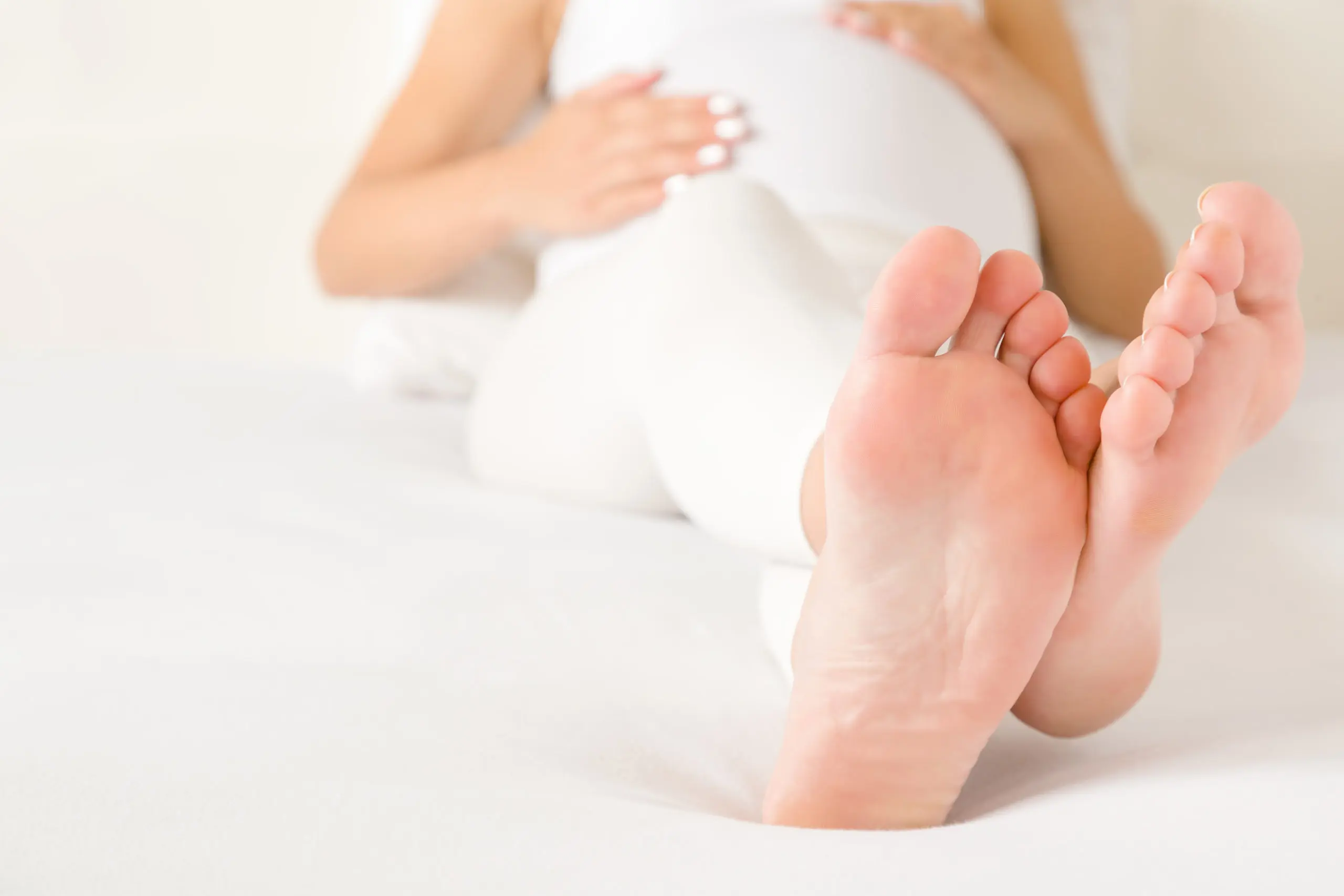
Introduction
Pregnancy is a journey filled with joy and physical changes, some of which can affect your feet, leading to discomforts like edema, arch pain, and flat feet. These changes are primarily due to hormonal adjustments and increased body weight. Understanding and managing these foot health issues can significantly enhance your comfort during pregnancy. This guide offers expert strategies to navigate these changes effectively, ensuring a more comfortable and joyful pregnancy journey.
Table of Contents
Navigating Pregnancy-Induced Edema
Pregnancy often brings with it edema, characterized by swelling in the feet and ankles due to increased fluid retention, a rise in blood volume, and the pressure from the growing uterus on the veins that return blood from the lower extremities. This pressure can hinder blood flow back to the heart, causing fluids to pool in the lower limbs, particularly as the pregnancy progresses.
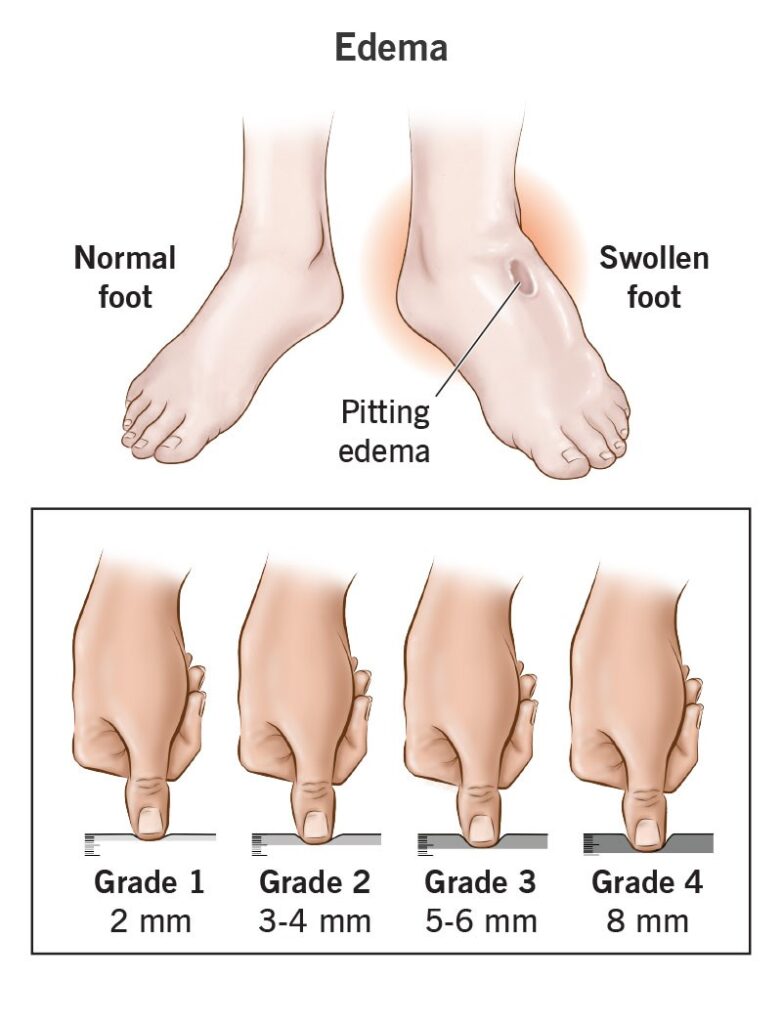
Strategies for Managing Edema
Effectively managing edema involves a combination of lifestyle adjustments and self-care measures to alleviate discomfort and prevent the condition from worsening. Here are detailed approaches to reduce swelling during pregnancy:
Elevate Your Feet
- Method and Timing: Develop a routine of elevating your feet above your heart level while sitting or lying down. Use pillows to support your legs comfortably, aiming for multiple sessions throughout the day, especially after long periods of standing or sitting.
- Advantages: Elevating your feet promotes improved venous return, reducing fluid accumulation in the lower limbs.
Maintain Hydration
- Optimal Water Consumption: Aim for at least 8-10 glasses of water daily. Proper hydration helps to dilute body sodium, which can alleviate fluid retention.
- Importance: Drinking enough water can paradoxically reduce swelling by helping your body maintain a balanced fluid level.
Select Appropriate Footwear
- Choice of Shoes: Choose footwear that is both comfortable and supportive, providing ample room for your feet. Opt for flats or supportive sandals with cushioned soles over high heels.
- Compression Solutions: Ensure that socks or stockings are not too tight. Consider wearing maternity or compression socks to support venous return without excessive constriction.
Incorporate Gentle Exercise
- Suggested Activities: Engage in low-impact exercises such as walking, prenatal yoga, or swimming to boost blood circulation and potentially decrease swelling.
- Exercise Regularly: Strive for moderate activity most days of the week for at least 30 minutes, while also paying attention to your body’s signals for rest.
Additional Recommendations
- Dietary Adjustments: Monitor your salt consumption to avoid excess sodium, which can cause water retention. Add potassium-rich foods to your diet to assist in fluid regulation.
- Rest and Stress Management: Take regular breaks throughout the day to rest and reduce the amount of time you spend standing. Use relaxation techniques to manage stress, which can exacerbate swelling.
- Symptom Monitoring: While mild to moderate swelling is common, sudden or severe swelling in your hands, face, or legs could be a sign of preeclampsia, a serious condition requiring immediate medical attention.
By following these guidelines and being attentive to your body’s needs, you can significantly ease the discomfort of pregnancy-induced edema, leading to a more comfortable pregnancy journey. Always consult with your healthcare provider to customize these strategies to your specific situation and confirm their safety for you and your baby.
Exploring Changes in Foot Health During Pregnancy: Arch Pain and Flat Feet
Pregnancy introduces a range of physical changes, with foot health being a significant area of impact. Many pregnant women experience arch pain and develop flat feet, primarily due to hormonal shifts that prepare the body for childbirth.

Understanding the Cause
The hormone relaxin, crucial for childbirth, not only loosens the ligaments in the pelvis but also affects the feet. This results in the flattening of the arches under the increased weight of pregnancy, leading to arch pain and possibly permanent changes in foot structure and walking patterns.
Strategies for Relief
Orthotic Inserts: Custom orthotic inserts can offer vital support for the arches, evenly distributing foot pressure to relieve pain and prevent further flattening of the arches.
Footwear Choices: Selecting the right shoes is essential. Look for footwear with robust arch support and cushioning to reduce foot stress. High heels should be avoided in favor of flats or supportive sneakers that can accommodate changes in foot size.
Stretching Exercises: Implement daily stretching routines for the feet and calves to reduce tension, enhance flexibility, and alleviate discomfort. Focus on stretches for the arches and calves, and consult a healthcare professional for safe pregnancy exercises.
Regular Physical Activity: Gentle, consistent exercise improves circulation and foot health. Consider walking, swimming, or prenatal yoga, which strengthen the muscles of the foot and leg without excessive strain on the arches. Pay attention to your body’s comfort levels to avoid overexertion
Addressing Overpronation and Ankle Instability
The physical changes of pregnancy can also lead to overpronation and ankle instability due to the increased weight and loosened ligaments causing the foot’s arch to flatten.
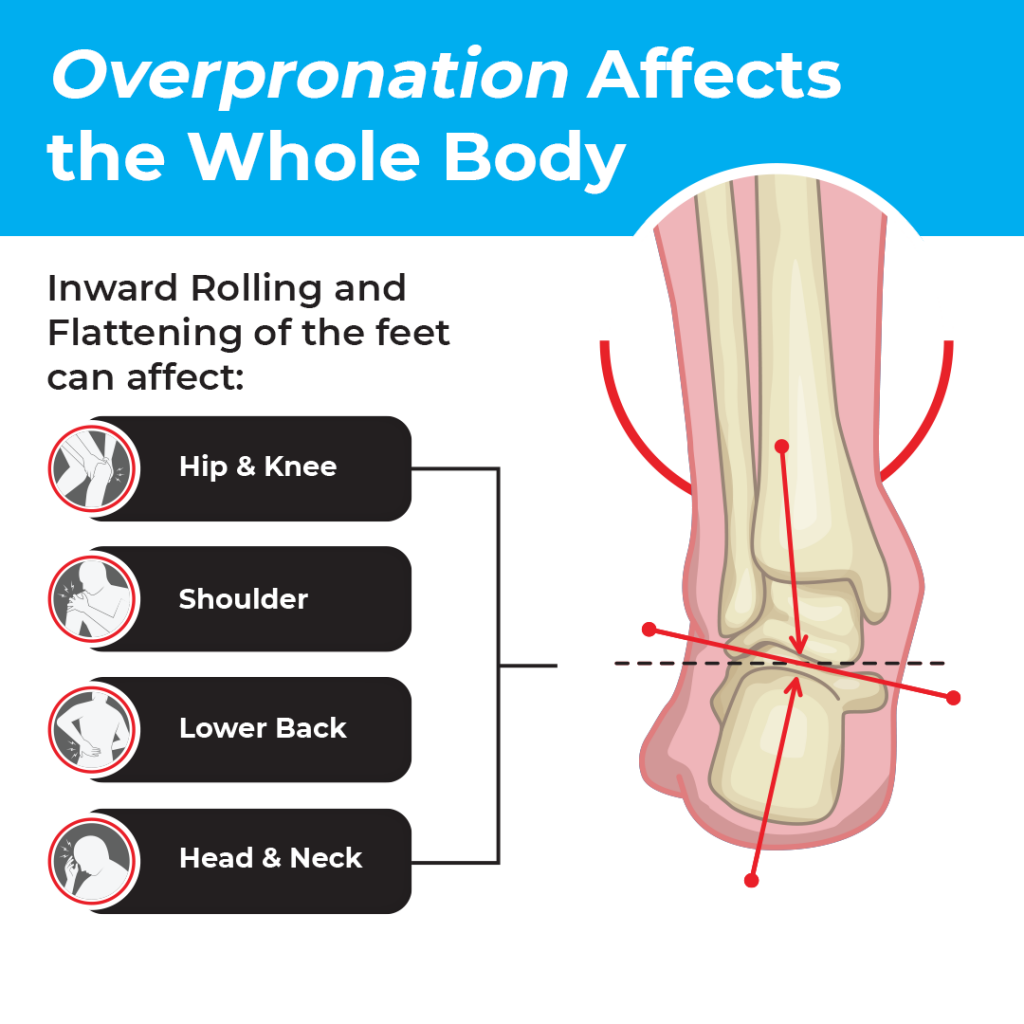
Managing Overpronation and Ankle Instability
Stability Shoes: Footwear designed for stability and motion control is crucial for managing overpronation and ankle instability. These shoes support the inner side of the foot, preventing excessive inward rolling.
Supportive Devices: Braces or taping can offer additional ankle support during activities, helping to maintain proper alignment and reduce the risk of sprains. Consult a healthcare professional for recommendations and proper application techniques.
Strength and Balance Exercises: Enhancing the strength of ankle and foot muscles can improve stability. Incorporate simple exercises like heel raises and toe taps, along with balance exercises, to strengthen these areas. Always check with a healthcare provider to ensure exercises are safe during pregnancy.
Managing Leg Cramps and Ingrown Toenails
Pregnancy also brings challenges like leg cramps and ingrown toenails, stemming from hormonal changes, increased physical demands, and adjustments in body shape.
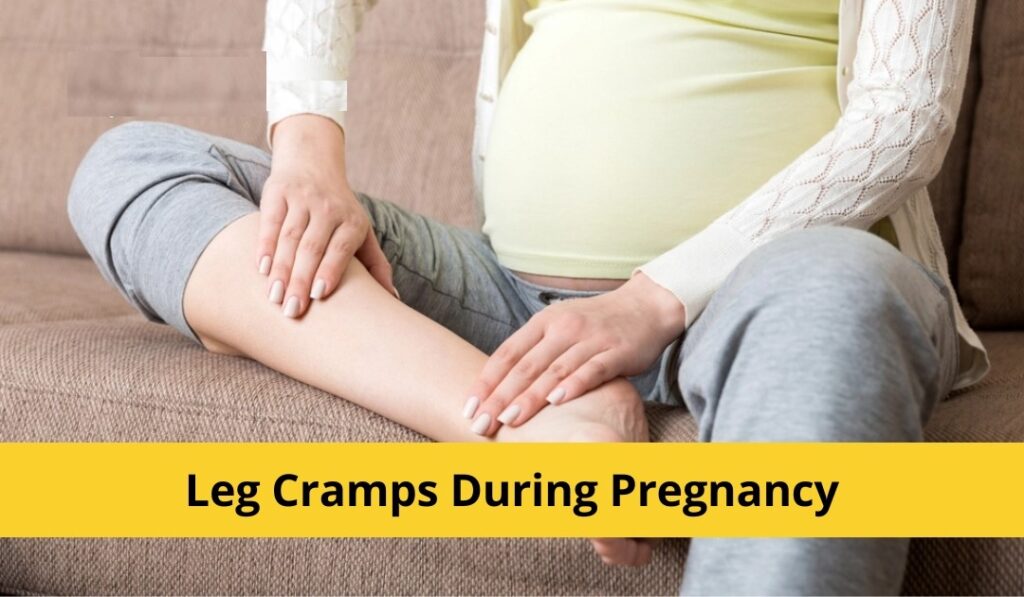
Leg Cramps During Pregnancy
Leg cramps, often occurring suddenly and at night, are common during pregnancy. They may be related to circulatory changes, increased pressure on nerves and muscles, and nutritional needs.
Relief Strategies for Leg Cramps
- Pre-Bedtime Stretching: Performing gentle calf stretches before bed can help prevent cramps by relaxing the muscles.
- Hydration and Nutrition: Drinking plenty of fluids and eating a balanced diet rich in magnesium, calcium, and potassium can help reduce cramps. Include foods like leafy greens, nuts, dairy products, bananas, and avocados in your diet.
- Massage and Warmth: Massaging the affected area or applying warm compresses can relieve pain by increasing blood flow and relaxing the muscle.
- Proper Muscle Stretching: Gently stretch the muscle during a cramp; for calf cramps, flex your foot upwards. Avoid pointing your toes, which can intensify the cramp.
- Light Exercise: Regular activities like walking or prenatal yoga can improve circulation and muscle tone, potentially reducing cramps.
Managing Ingrown Toenails During Pregnancy
The risk of ingrown toenails increases with pregnancy-induced swelling and changes in foot shape, often aggravated by tighter footwear and difficulty in maintaining proper toenail care.

Prevention and Management of Ingrown Toenails
Suitable Footwear: Opt for shoes with a wide toe box to lessen pressure on the toes, preventing the nail edges from growing into the skin.
Proper Toenail Care: Trim nails straight across and keep them at a moderate length. If reaching your toes becomes challenging, seek help to ensure proper nail care.
Foot Hygiene: Regularly wash and dry your feet to avoid conditions that favor ingrown toenails.
Soaking Feet: Soak your feet in warm, soapy water to soften the skin around an ingrown toenail, facilitating gentle correction. If the condition persists or worsens, consult a professional.
Frequently Asked Questions (FAQs)
Q: Why do pregnant women experience changes in foot health?
A: Hormonal changes, especially the increase in relaxin, cause ligaments to relax, affecting the feet’s structure. This, combined with increased body weight, can lead to arch pain, flat feet, and edema.
Q: What are some effective ways to manage edema during pregnancy?
A: Elevating your feet, staying hydrated, choosing supportive footwear, and engaging in gentle exercise can help manage swelling and improve comfort.
Q: Can pregnancy permanently change my foot size or shape?
A: Yes, the hormonal changes and increased weight can lead to lasting changes in foot structure, including a possible increase in shoe size or flattened arches.
Q: How can I prevent or manage arch pain and flat feet during pregnancy?
A: Utilizing orthotic inserts, wearing appropriate footwear, performing stretching exercises, and maintaining regular physical activity can support arch health and alleviate pain.
Q: What should I do if I experience severe or sudden swelling in my feet?
A: Sudden or severe swelling can be a sign of preeclampsia, a serious condition. It’s important to seek immediate medical attention if you experience these symptoms.
Conclusion
Navigating foot changes during pregnancy requires understanding and proactive management to ensure your comfort and health. By incorporating these expert strategies into your daily routine, you can alleviate discomfort and enjoy this special time with greater ease. Remember, every pregnancy is unique, so consult with your healthcare provider to tailor these recommendations to your specific needs. Embrace these changes with confidence and care, as you prepare for the arrival of your little one.
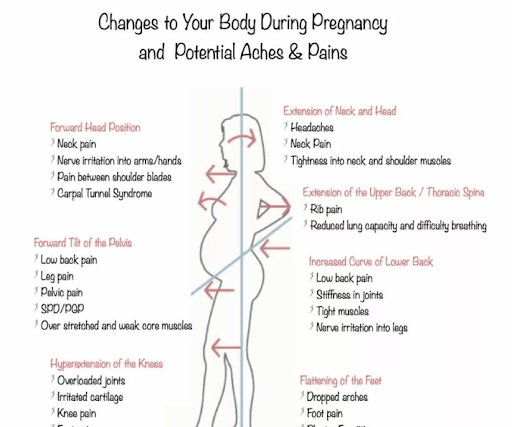
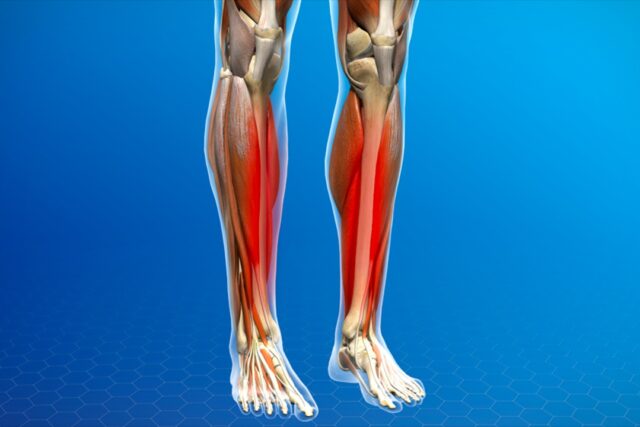

MOST COMMENTED
Animal-Based Proteins / Casein Protein / Dietary Protein / High-Protein Diets / Pea Protein / Plant-Based Proteins / Protein / Protein Deficiency / Protein Supplements / Proteins / Whey Protein / Whey Proteins
Is Protein Powder Safe for Teenagers and Children?
Animal-Based Proteins / Casein Protein / Dietary Protein / High-Protein Diets / Pea Protein / Plant-Based Proteins / Protein / Protein Deficiency / Protein Supplements / Proteins / Whey Protein / Whey Proteins
Unlock the Power of Proteins for Optimal Gut Health
Animal-Based Proteins / Casein Protein / Dietary Protein / High-Protein Diets / Pea Protein / Plant-Based Proteins / Protein / Protein Deficiency / Protein Supplements / Proteins / Whey Protein / Whey Proteins
Pea Proteins: The Best Plant-Based Protein Alternative?
Multivitamin
Total Health: Multivitamin for Active Lifestyles
Multivitamin
WellnessFusion: Complete Multivitamin Support
Dietary Supplement
Revitalize Your Health: The Magic of Red Yeast Rice Capsules
Foot care / Foot Health
Revitalize Your Foot Care Routine: Essential Tips for Optimal Foot Health
Foot Problem / Diabetics / Foot Health
Diabetics: Mastering Footwear Selection for Enhanced Foot Health and Ultimate Comfort
Exercises and Footwear Tips for Hammertoe Relief / Foot care / Foot Health / Foot Pain / Foot Problem / Hammertoes
Unlock Effective Exercises and Footwear Tips for Hammertoe Relief
Hammertoes / Foot Health / Foot Pain / Foot Problem
Unlock Relief: Essential Guide to Hammertoes Causes, Symptoms, and Treatments